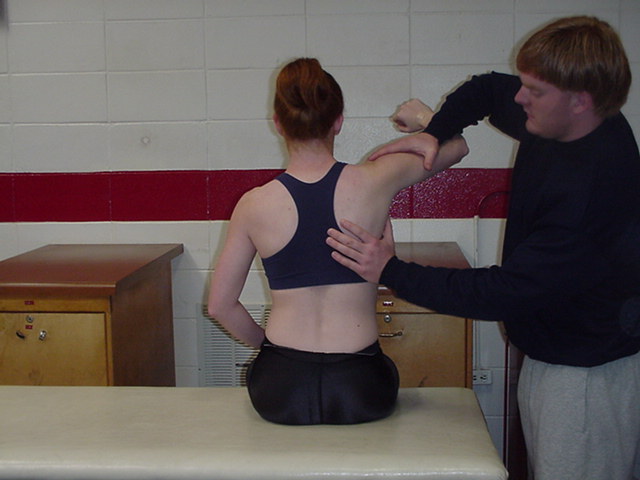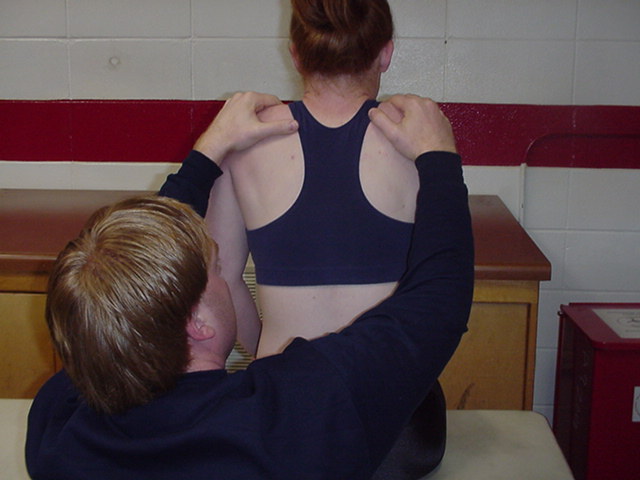| Scapular Abduction |
Patient is short sitting with hands on lap. Examiner
stands at test side with one hand giving resistance on the arm just above
elbow. The other hand uses thumb, index finger, and web space in
between to palpate inferior angle of scapula. Patient raises arm to
about 130 degrees of flexion against resistance. Scapula should
abduct without winging. |
 |
| Scapular Adduction |
Patient is prone with shoulder at edge of table.
Shoulder is abducted to 90 degrees and externally rotated. Elbow may
be flexed to a right angle. Examiner stands at test side and
stabilizes the contralateral scapular area. Resistance hand is
placed over distal humerus. Patient lifts elbow towards ceiling
which adducts scapula. |
 |
| Scapular Adduction and Downward Rotation |
Patient is prone with shoulder internally rotated, elbow
flexed, and arm adducted across the back. Examiner stands at test
side with resistance hand placed on humerus just above the elbow.
Resistance is given in a downward and outward direction. Palpation
hand is placed on vertebral border of scapula. Patient lifts hand
off the back against resistance which adducts scapula. |
 |
| Scapular Elevation |
Patient is short sitting with hands relaxed in lap.
Examiner stands behind patient and places hands over the top of both
shoulders to give resistance in a downward direction. Patient shrugs
shoulders simultaneously against resistance. |
 |
Hislop, Helen J. & Montgomery, Jaqueline with
contributor Barbara Connelly.



